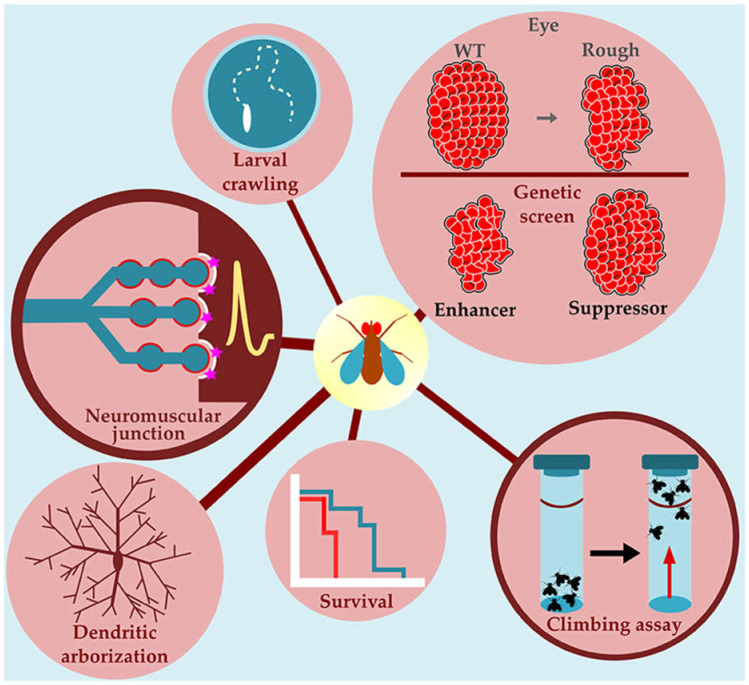Figure 2.
Drosophila is a model to study neurodegenerative diseases. Several neurodegenerative diseases, including amyotrophic lateral sclerosis (ALS), have been modeled in Drosophila via transgenic expression of wildtype or mutated human proteins. The toolkit available at Drosophila allows an in-depth study of the neurodegenerative mechanisms associated with these diseases. Several behavioral tasks, such as larval crawling and climbing assays, allow monitoring the locomotor activity during Drosophila life. Drosophila lifespan assays are useful to follow the time course of neurodegeneration and might be used as a readout for genetic screens. When expressed in the eye, toxic proteins disrupt the stereotyped organization of ommatidia and bristles, leading to a rough eye phenotype. This easily observable readout allows to perform genetic screens aimed at identifying modifiers (enhancers or suppressors) of the rough eye phenotype. Dendritic arborization neurons have a complex dendritic branching pattern and are widely used to identify genes involved in dendrite morphogenesis processes. The larval neuromuscular junctions (NMJs) are glutamatergic synapses that use ionotropic glutamate receptors and post-synaptic scaffolding proteins sharing similarities with mammalian brain synapses. These NMJs are easy to visualize and relatively simple with few axonal branches composed of synaptic boutons, which contain the active zones (sites of neurotransmitter release). Morphological and electrophysiological analyses on larval NMJs are frequently used to study how gene loss or gain of function might influence synapse development and function.

